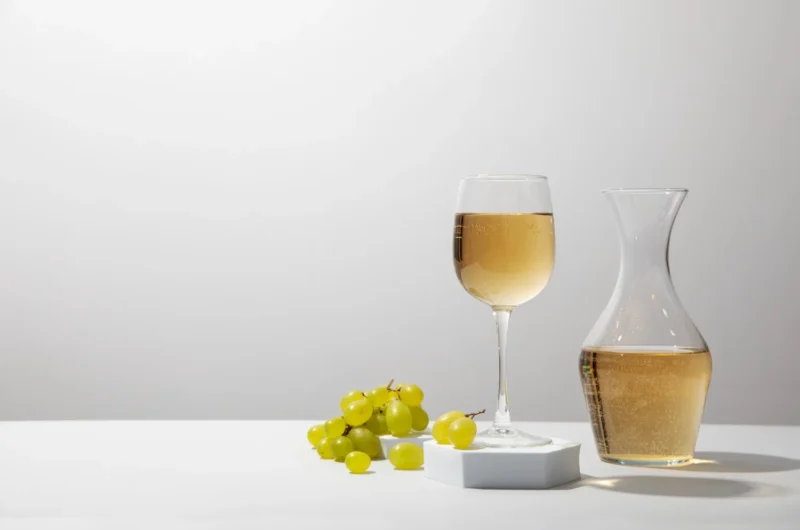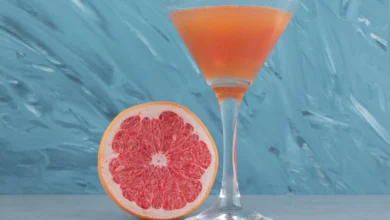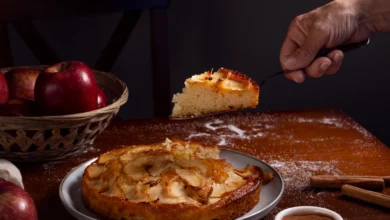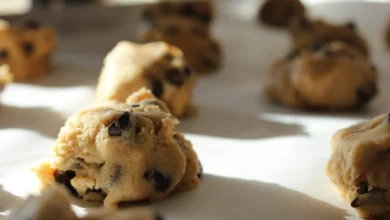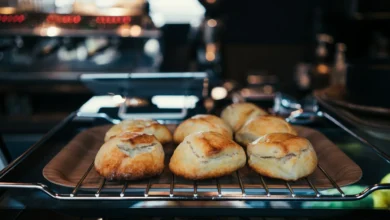Sangria Blanca: Your New Go-To Recipe for Refreshing Sangria

The long days and warm nights of summer practically beg for a bright, fruity drink to sip on the patio. That’s where White Sangria comes in – this sweet, refreshing cocktail is the perfect way to beat the heat.
Contents
Sangria Blanca
Whether you’re sharing with friends and family or savoring a quiet moment, a glass of ice-cold sangria is pure summer bliss.
The Secret to a Great Sangria
The beauty of sangria is its versatility. There’s no single “right” recipe, and you can easily adjust the ratio of ingredients to suit your taste. However, here are a few tips that always hold true:
- Marinated Fruit: The key to delicious sangria is letting the flavors mingle. Prepare your pitcher of sangria well in advance, so the fruit has time to soak and become infused with flavor.
- Don’t Measure, Just Mix: While there are recipes out there, sangria is a forgiving cocktail. Feel free to be spontaneous and have fun with it!
- Second Glass Guarantee: A well-made sangria is so easy to slurp down, you’ll be reaching for a second glass in no time.
Personal Touch: As a home bartender, my favorite thing about sangria is how you can make it your own. I love experimenting with different seasonal fruits, adding a splash of liqueur for sweetness, or even topping it with a touch of bubbly for an extra special occasion.
What Type of Wine Should I Use?
Unlike traditional red sangria, White Sangria calls for – you guessed it – white wine! But with so many options, how do you choose? The key is to look for bottles that are light, crispy, and complement the fruity flavors you’ll be adding. Avoid heavily-oaked wines, as the oaky tannins can clash with the overall fresh taste you’re aiming for.
Here are some excellent white wine choices perfect for a White Sangria:
- Pinot Grigio (or Pinot Gris): This classic Italian wine is a crowd-pleaser with its crispness and subtle citrus notes.
- Sauvignon Blanc: A vibrant choice with zesty acidity and hints of tropical fruit.
- Riesling: Off-dry or slightly sweet Rieslings add a touch of sweetness and delicate floral aromas.
- Unoaked Chardonnay: A Chardonnay that hasn’t been aged in oak offers bright, clean fruit flavors.
Tip: While there are great options, don’t feel obligated to splurge on an expensive bottle. A good, affordable white wine makes the perfect base for your fruity sangria concoction!
Nutritional Information
| Nutrient | Amount | Percent Daily Value |
| Calories | 180 kcal | 9% |
| Carbohydrates | 25g | 8% |
| Protein | 1g | 2% |
| Fat | 1g | 2% |
| Saturated Fat | 1g | 6% |
| Sodium | 22 mg | 1% |
| Potassium | 171 mg | 5% |
| Fiber | 1g | 4% |
| Sugar | 20g | 22% |
| Vitamin A | 33IU | 1% |
| Vitamin C | 40 mg | 48% |
| Calcium | 28 mg | 3% |
| Iron | 1 mg | 6% |
Sangria Blanca
Course: DrinksCuisine: Spanish8
servings15
minutes4
hours200
kcal4
hours15
minutesA mix of white wine, seasonal fruit, and a hint of sweetness come together for a drinkable delight perfect for patio sipping.
Ingredients
White Wine: A full bottle (750ml) of your preferred dry white wine. Sauvignon Blanc, Pinot Grigio, or a Spanish Albariño are excellent choices.
Sparkling Element: Ginger ale adds a delightful fizz, but feel free to substitute with lemon-lime soda, sparkling water, or even a splash of Cava.
Optional Liqueur: Cognac adds warmth and depth. Substitute with apricot brandy, peach schnapps, or orange liqueurs like Cointreau or Grand Marnier for a twist.
Citrus Zing: Fresh lime wedges for both juice and visual appeal.
Tropical Touch: Diced pineapple (core removed) for sweetness and a vibrant element.
Berry Burst: Sliced or quartered strawberries. Swap with raspberries, blueberries, or your favorite berry mix for a different flavor profile.
Sweetness & Balance: A touch of lime cordial. Simple syrup or agave nectar work as substitutes.
Unexpected Twist: A hint of vanilla extract adds warmth and rounds out the flavors.
The Essential: Plenty of ice to keep your sangria chilled to perfection.
Directions
- Fruitful Foundation: Start by washing and slicing your favorite selection of fruits. Think bright citrus like oranges and lemons, juicy peaches, sweet berries, or even crisp apples. Get creative!
- Wine & Flavor: In a large pitcher, combine your fruit medley with a bottle of chilled, dry white wine. Add a splash of your chosen liqueur (if using) and a touch of lime cordial or your preferred sweetener. Give it all a good stir.
- Infusion Time: For the flavors to truly mingle, refrigerate your sangria for at least a few hours, or even overnight, for maximum flavor.
- Serve with a Sparkle: When ready to serve, fill glasses with ice to avoid diluting your sangria. Pour your beautifully infused sangria over the ice, and consider topping it off with a splash of soda water or ginger ale for a touch of fizz. Garnish with extra fruit slices for a festive touch!
Notes
- Choose a dry white wine to avoid an overly sweet sangria.
- Get creative with your fruit! Use what’s in season for the freshest flavors.
- Adjust sweetness to taste as your sangria infuses.
- Leftovers? Freeze them for sangria popsicles or a fun twist on fruit salad.
Sangria Blanco Yellow Tail
While making your own homemade sangria is incredibly rewarding, sometimes you want a quick and delicious option. Several popular wine brands offer pre-made Sangria Blanco, including Yellow Tail. These ready-to-drink options provide a great shortcut for picnics, parties, or when you’re short on prep time.
How to Serve Sangria
The beauty of sangria is that it’s delicious and incredibly adaptable for any occasion. Here’s how to make serving this beverage just as enjoyable as drinking it:
Prep for Perfection
- Infuse: Remember, the longer the fruit and wine steep together, the tastier your beverage will be! Ideally, prepare sangria several hours ahead of time, or even a couple of days in advance, for the most flavorful punch.
- Get Fancy (Optional): Freeze some extra fruit on a cookie sheet. When you’re ready to serve, pop these frozen pieces into each glass. They’ll work like ice cubes to keep your sangria chilled but add bursts of fruity flavor instead of watery dilution.
Serving Styles
- Casual and Cozy: If you’re chilling at home with a small group of friends, serve your sangria straight from the pitcher. This keeps things relaxed and easy.
- Festive for a Crowd: For a spring brunch or a larger gathering, a sangria punch bowl makes a beautiful centerpiece. Don’t forget a ladle, so guests can easily serve themselves!
Personal Touch: I always keep a selection of colorful skewers on hand for guests to spear their favorite fruit pieces—it’s a fun and practical way to enjoy that delicious, wine-soaked fruit.
Sangria Blanco Cava
Replace some still white wine in your recipe with Cava, Spain’s famous sparkling wine. This adds delightful effervescence and a festive touch to your drink, perfect for special occasions.
Can I Use Other Fruits?
Absolutely! White Sangria is a fantastic way to make use of excess, in-season fruits. While classic recipes often call for certain staples, don’t be afraid to experiment with different types of fruit you find at the grocery store. Here are a few suggestions to spark your creativity:
- Stone Fruits: Peaches, apricots, and mangoes add a beautiful sweetness and soft texture to your sangria pitcher.
- Crisp and Tart: Apples and kiwis bring a refreshing tang that balances out the sweeter elements.
- Berries and Citrus: Raspberries offer a burst of color and flavor, while oranges and lemons provide a classic citrusy zip.
Personal Touch: One of my favorite sangria discoveries happened when I had some leftover pineapple from a fruit salad. It added a delightful tropical element to my white wine sangria! Don’t be afraid to try those less-common sangria fruits.
Can I Make Sangria in Advance?
Absolutely! In fact, sangria is one of those glorious drinks that actually gets better with time. The flavors of the fruit meld beautifully with the wine the longer they sit. Here’s what you need to keep in mind:
- The Basic Recipe: Prepare your sangria base in advance – chop your fruit, mix it with your chosen wine, and let it all soak in the fridge for several hours or even overnight.
- Sparkling Element: For a bubbly sangria, avoid adding any carbonated elements (think ginger ale or sparkling water) until just before you’re ready to serve. This keeps your sangria fresh and fizzy.
- Make-Ahead Magic: Sangria is your party prep best friend! By leaving out the bubbly elements, you can have a fully prepared pitcher of sangria ready to go in the fridge. Add a splash of fizz right before serving, and your delicious drinks are ready in the blink of an eye.
Health Considerations
Benefits
Like red wine, sangria offers antioxidants and potential heart health benefits when consumed moderately. The fruit component adds additional nutritional value.
Cautions
As with any alcoholic beverage, moderation is key. Whisk and Nibble suggests you to see NIAAA‘s guidelines. The sugar content of sangria can vary based on your chosen wine, liqueurs, or added sweeteners.
RELATED: Grapefruit and Rum Cocktail
RELATED: Tequila Cocktail
Final Words from Whisk and Nibble
Sangria Blanca is a fantastic drink for gatherings or solo relaxation. Its adaptability lets you tailor it to your taste while its stunning flavor and vibrant visuals make it a guaranteed crowd-pleaser.
______________________________
Frequently Asked Questions
What is the meaning of sangria blanca?
Sangria blanca means “white sangria.” It’s a more recent innovation compared to traditional red sangria. Penelope Casas, an American food writer specializing in Spanish cuisine, recommends using dry white wines like Rueda, Jumilla, or Valdepeñas for a delicious sangria blanca.
Is sangria an alcoholic drink?
Yes, sangria is a mixed alcoholic drink originating in Spain. While the exact color depends on the type of wine used (red sangria is made with red wine and white sangria with white wine), all variations contain alcohol. Ingredients and recipes vary based on region.
What does sangria mean in wine?
The word “sangria” is derived from the Spanish word “sangre,” meaning “blood.” This likely refers to the original ruby hue of classic red wine sangria. Interestingly, the root of this Spanish word is related to the older Sanskrit term “sakkari,” meaning sugared wine.
Is sangria a wine or drink?
While sangria is extremely popular and often found in the wine section of shops and on restaurant menus, it’s technically not a type of wine on its own. Sangria is a delicious, wine-based beverage that highlights a delightful blend of wine and fruit-forward elements.
How alcohol is sangria?
Alcohol content in sangria can vary. In the European Union, commercially bottled sangria labeled as such and produced in Spain is limited to less than 12% alcohol by volume (ABV). Sangrias produced in the U.S. usually range between 5% and 15% ABV. Generally, red wine sangrias are stronger due to the wine choice, while white wine punches may be a bit lighter.
Is it OK to drink sangria?
Just like enjoying red wine in moderation, drinking sangria can offer some health benefits. These include improving heart, stomach, and brain health due to the presence of chemicals with antioxidant, anti-inflammatory, and even lipid-improving properties.
Is sangria a good drink?
Sangria boasts the same beneficial properties found in red wine like antioxidants (polyphenols and flavonoids) which protect cells from aging. It also contains resveratrol, a substance found in grapes, that helps reduce inflammatory processes in the body.
Is sangria better than beer?
When comparing sangria to beer, a standard serving of sangria has slightly fewer calories. However, keep in mind tinto de verano (a mix of red wine and lemon-lime soda), fruit, and possible liquor content can quickly add up. As always, moderation is key! It’s important to enjoy both these refreshing summer drinks responsibly.
Is sangria wine strong?
Red wine typically has a heavier, bolder flavor and often a slightly higher alcohol volume (ABV) than white wines. Consequently, red sangria tends to be stronger than variations made with white wine. Traditional sangria often includes the addition of brandy, especially when made with Tempranillo-based wine from the Iberian Peninsula in Spain, a classic ingredient.

